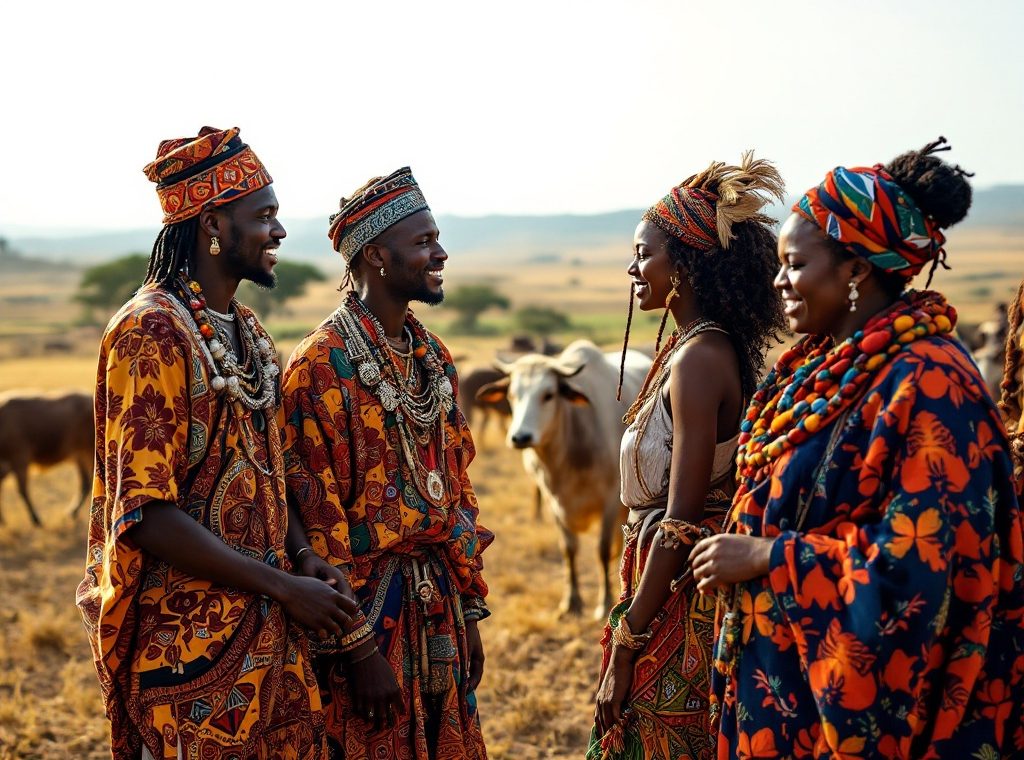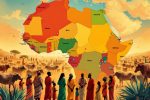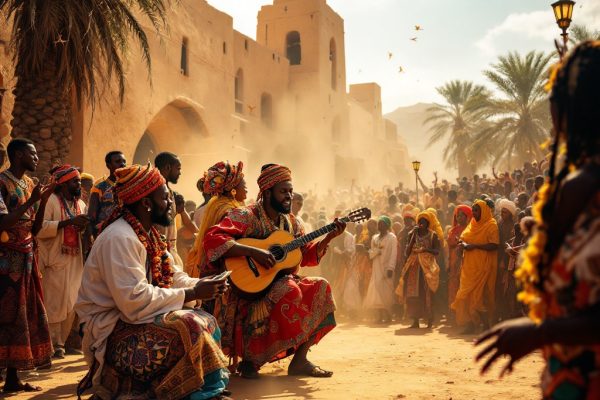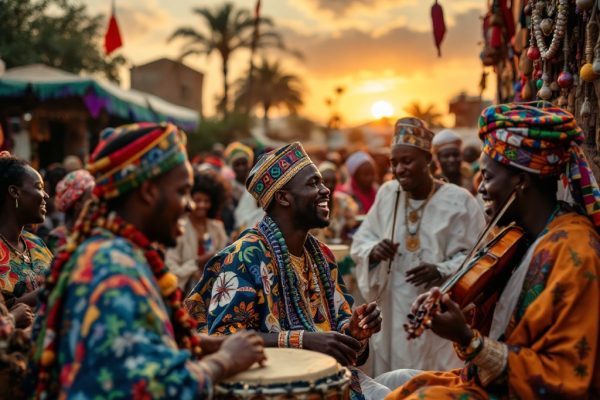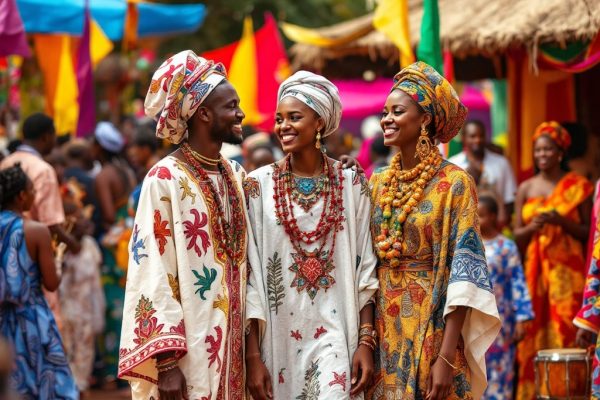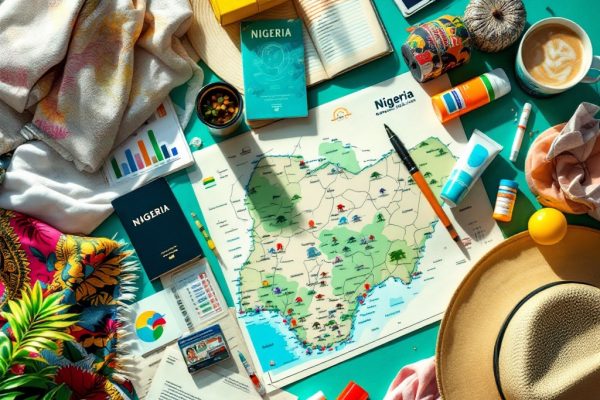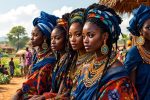The Fulani Ethnic Group: Africa’s Nomadic People and Their Rich Culture
Journey into the fascinating world of the Fulani, one of West Africa’s most prominent nomadic groups. From their ancient origins in the Senegambia region to their vast settlements spanning from Lake Chad to the Atlantic coast, discover the rich tapestry of Fulani history, culture, and traditions. Explore their deep connection to Islam, the intricacies of their social structure, the vibrant beauty of their attire, and the significance of cattle in their nomadic lifestyle. Delve into the captivating rhythms of their music and the wisdom embedded in their oral traditions. Uncover the secrets of Pulaaku, their unique code of conduct, and witness the bravery displayed in the Sharo festival. Embark on this enriching exploration and gain a deeper understanding of the Fulani people.
Important information
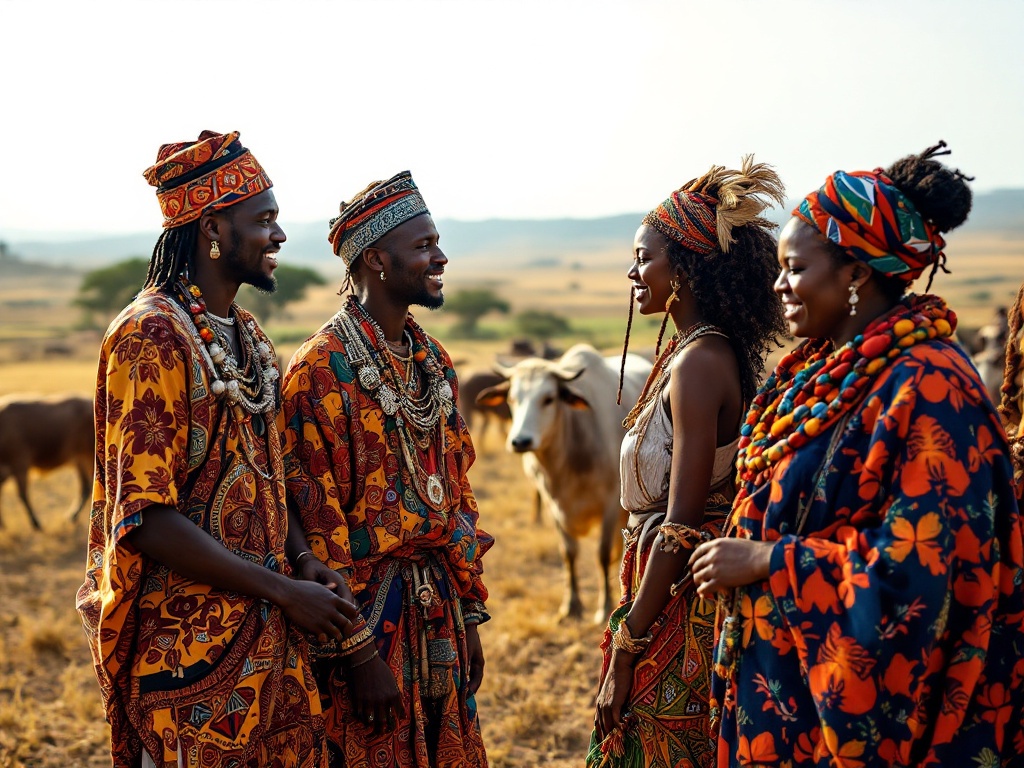
- The Fulani are a primarily nomadic pastoralist group spread across West Africa, known for their cattle herding and deep connection to their livestock. Cattle represent wealth and status in their society.
- Islam is deeply ingrained in Fulani culture, influencing daily life, traditions, and social structures. They were early adopters of Islam in West Africa and played a significant role in its spread.
- The Fulani have a rich cultural heritage, including the code of Pulaaku, which emphasizes morals like self-control, patience, and respect. The Sharo festival is a significant rite of passage for young men.
- A nomadic lifestyle has shaped their traditions and social structure, fostering strong family ties and community support. They are known for their adaptability and unique traditions like the Wodaabe “gerewol” male beauty contest.
- Music, dance, and storytelling are central to Fulani culture, with griots playing a vital role in preserving their history and traditions through oral transmission.
Introduction to the Fulani Ethnic Group
Please provide the text you would like me to revise. I’m ready to help you enhance clarity, engagement, and readability using effective HTML formatting.
The Historical Background of the Fulani
The Fulani, originating from North and sub-Saharan Africa approximately a millennium ago, were early adopters of Islam in West Africa. This conversion significantly influenced their culture. Their nomadic lifestyle established crucial trade routes throughout the region. During the 18th and 19th centuries, they further spread Islam through various jihads. While their exact origins remain uncertain, they are believed to have descended from Berber and West African groups, possibly originating near Futa Toro in Senegal. Driven by population growth and the continuous search for grazing land, the Fulani migrated extensively, eventually establishing settlements and states such as Macina and Futa Jalon.
Origins and Ancestry
Originating in West Africa’s Senegambia region, the Fulani trace their ancestry to North and sub-Saharan African nomads. Their history is deeply intertwined with migration across the continent, a journey that fostered adaptability to diverse environments.
Role in Establishing Trade Routes
The Fulani people’s migrations across West Africa forged vital trade routes, connecting diverse regions through their nomadic lifestyle. This movement facilitated not only commerce, but also cultural exchange.
Conversion to Islam and Religious Influence
The Fulani people were early adopters of Islam, and the religion has deeply influenced their culture. Most Fulani observe core Islamic tenets, including praying five times daily and believing in Allah. These Islamic principles are woven into their daily lives, shaping social customs, marriage practices, and community structures. Urban Fulani tend to adhere more strictly to Islamic practices. Nomadic Fulani, due to their lifestyle, have more flexibility in their observance. Even kinship ties and the common practice of cousin marriage reflect the lasting influence of Islam.
The Geographic Spread of the Fulani People
The
Regions of Settlement in Africa
The Fulani people primarily inhabit West Africa. Significant populations are found in Nigeria, Mali, Guinea, Senegal, and Niger. Their settlements span a vast area, stretching from Lake Chad to the Atlantic coast.
Nomadic Migration Patterns
The Fulani, nomadic pastoralists, journey across the Sahel and West Africa, traversing countries such as Nigeria, Niger, Senegal, Mali, Burkina Faso, and Guinea. Their migrations, driven by the search for water and pasture for their livestock, vary in scale. Small family groups and large communities alike undertake these seasonal movements, often covering hundreds of kilometers.
The Nomadic Lifestyle of Fulani Pastoralists
The Fulani, primarily nomadic herders, raise cattle, goats, and sheep, forming the backbone of their economy. This lifestyle influences their trade and resource management, enabling them to adapt to environmental shifts by migrating to fresh pastures and water sources. Their constant movement has shaped a close-knit social structure, fostering strong family ties and community support. Beyond economic value, cattle represent wealth and status within Fulani culture, deeply connecting them to their livestock. This demanding nomadic existence allows the Fulani to maintain their traditions and cultural identity across vast territories and diverse environments. These traditions include intricate social structures and a profound respect for their animals.
Cattle Herding and Economic Influence
Cattle are integral to the Fulani people’s lives, forming the bedrock of their economy and social status. Herding is their primary economic activity, and a person’s wealth is often measured by the size of their herd. Milk and other dairy products are vital trade commodities, exchanged for necessities like grain. While some Fulani engage in farming, cattle retain immense cultural significance and economic power within their society.
Sustainability and Adaptability in Nomadic Life
The Fulani nomads live a sustainable life, relying on their deep traditional knowledge and remarkable adaptability. Their seasonal migrations ensure their herds have access to essential resources, guaranteeing their survival. Portable homes, such as the Sukkala, allow for easy relocation. Their diverse dialects and interactions with other African communities further demonstrate their adaptability. However, modernization presents new challenges, requiring them to adjust to changing environments and develop innovative resource management strategies. This might include adopting new grazing techniques and exploring modern trading methods. Despite these pressures, the Fulani continue to adapt and strive to preserve their unique way of life.
Traditional Lifestyle
The Fulani nomads’ traditional way of life is deeply connected to their livestock and seasonal migrations. Their portable homes, like the Sukkala, facilitate easy movement.
- deep traditional knowledge,
- seasonal migrations,
- portable homes (Sukkala).
Modern Challenges
Modernization presents new challenges for the Fulani, impacting their environment and resource management. They are adapting by exploring new grazing techniques and trading methods.
- changing environments,
- innovative resource management,
- new grazing and trading methods.
Social Structure and Community Life
Fulani society observes a hierarchical structure. At the top are the wealthy cattle owners and herders, followed by artisans and servants. This social order is largely based on cattle ownership and community roles. Pastoral Fulani groups, however, tend to be more egalitarian. Family structures typically center around polygynous households, often composed of a man, his wives, and their unmarried children. These family units are further influenced by cultural norms and Islamic practices, such as cousin marriage.
Caste System and Social Hierarchy
Fulani society has a distinct hierarchical structure. It comprises nobles, traders, artisans, and those descended from slaves. This system has historically shaped social interactions and marriage patterns, with people typically marrying within their class. Lineage determines an individual’s societal role and standing. However, modern urban life is gradually transforming these traditionally rigid roles.
Community and Kinship Networks
Family and clan are central to Fulani society. These close-knit groups offer essential support, sharing resources and upholding cultural traditions. This strong sense of community is crucial to their nomadic way of life, allowing them to thrive.
Polygynous Marriages and Endogamy
The Fulani people commonly practice polygyny, where men have multiple wives. Endogamy, marriage within their community, is also prevalent, helping to maintain their cultural heritage and reinforce social ties. Cattle are highly valued and integral to Fulani traditions, often serving as a crucial element in dowries.
Cultural Heritage and Traditions of the Fulani
Pulaaku, or “Fulani-ness,” is the bedrock of Fulani social life. This cultural code promotes virtues like self-control, patience, and respect, with a strong emphasis on discipline. One striking example is the Sharo festival, a ceremonial rite of passage where young men demonstrate their courage and endurance by being whipped. This ordeal marks their transition into adulthood. Fula weddings are also significant events, filled with elaborate ceremonies and rituals, often involving a bride price and joyous communal celebration. These rites of passage are not only markers of important life stages but also vital threads in the social fabric of the Fulani community.
The Code of Pulaaku
Pulaaku, the Fulani code of conduct, emphasizes essential morals such as self-control, patience, respect, and hospitality. These values are crucial for maintaining social harmony and preserving Fulani culture. Pulaaku shapes the Fulani’s interactions, influencing relationships both within their communities and with outsiders.
Ceremonial Practices and the Sharo Festival
The Sharo festival, a Fulani rite of passage, tests the bravery of young men. They publicly endure floggings to demonstrate their strength and transition into adulthood, signifying their readiness for marriage. This vibrant cultural display also reinforces community bonds and celebrates cherished Fulani traditions.
Fula Weddings and Rites of Passage
Fula weddings often involve arranged marriages, sometimes even planned before birth. Cattle are central to these unions, with the bride’s family providing them to the groom’s family. Polygyny is common, while divorce is rare.
Rites of passage, like marriage and the Sharo festival, are vital for preserving Fula culture.
The Sharo festival tests a young man’s bravery through a public whipping, demonstrating his strength and resilience.
Fula beauty ideals find expression through body art. Tattoos and henna are not merely adornments; they signify cultural identity, pride, and a connection to heritage.
Religious Beliefs and Practices
Islam is deeply woven into the fabric of Fulani identity. This is reflected in their daily prayers, observance of Ramadan fasts, and pilgrimages to Mecca. As Sunni Muslims, the Fulani played a crucial role in spreading Islam across West Africa. Celebrations such as Eid al-Fitr and Eid al-Adha hold significant importance within their communities. Interestingly, some Fulani also retain traditional beliefs, including those pertaining to supernatural powers. The Wodaabe, a subgroup of the Fulani, are known for “gerewol,” a unique male beauty contest and courtship ritual. This practice highlights the blend of Islamic and cultural influences that shape the rich tapestry of Fulani religious life.
Islamic Faith and Daily Prayers
Many people believe that obtaining a Check MIG is a complicated process, but it’s actually quite simple. Follow these steps to get your Check MIG:
Step 1: Key information about Check MIG.
Every traveler to or from Colombia must complete the Check MIG form. This applies to residents and citizens of Colombia as well, regardless of visa type or country of origin.
Step 2: Submit the form on time.
The Check MIG form should be submitted 72 to 24 hours before your flight. This ensures there’s enough time to resolve any potential technical issues.
Step 3: Information you need to provide.
When completing the Check MIG form, provide your personal information such as full name, passport number, nationality, and date of birth, as well as travel and health information.
Step 4: Standard processing time.
You should receive a confirmation email within 24 hours. However, it is recommended to complete the form in advance to avoid delays.
Step 5: Form validity.
The Check MIG form is valid for a single entry or exit. If you plan multiple trips to and from Colombia, you must complete a new form each time.
Cultural Practices Influenced by Religion
Islam is deeply ingrained in Fulani culture, influencing daily life from prayer times to major celebrations like Eid al-Fitr and Eid al-Adha. The Fulani also maintain unique traditions, such as the Wodaabe “gerewol,” a male beauty contest and courtship ritual that blends ancient customs with Islamic faith. This faith has also given the Fulani a distinct identity within their region.
Fulani Beauty and Aesthetic Practices
Fulani beauty ideals emphasize elaborate adornments and attire. Women showcase intricate hairstyles, often decorated with jewelry and henna. Facial tattoos, particularly around the lips and chin, are a common practice. Their traditional clothing features vibrant wrappers and robes, with styles varying based on region and social status. Men typically wear turbans and embroidered shirts. These customs not only express cultural identity but also signify social standing within the community. Materials like beads, shells, and metal are incorporated into jewelry and other decorative elements. Furthermore, beauty rituals, often utilizing natural ingredients, are deeply ingrained in Fulani culture.
Women
- Intricate hairstyles adorned with jewelry and henna,
- Facial tattoos around the lips and chin,
- Vibrant wrappers and robes.
Men
- Turbans,
- Embroidered shirts.
These customs express cultural identity and signify social standing within the community. Materials like beads, shells, and metal are incorporated into jewelry and other decorative elements. Beauty rituals using natural ingredients are deeply ingrained in Fulani culture.
Traditional Attire and Adornments
Fulani clothing is a vibrant expression of their culture, featuring richly colored and intricately detailed garments. Women typically wear brightly hued dresses and headwraps, complemented by exquisite jewelry. Men generally choose loose-fitting robes and trousers. A key element of Fulani attire is the kanga, a versatile rectangular cloth used as a shawl or head covering. The dashiki, a loose tunic, is a popular garment for both men and women. Jewelry plays a significant role in Fulani style, with beaded necklaces and earrings being particularly prevalent. These adornments are often crafted from materials like leather, silver, and gold. Henna tattooing is a cherished tradition, with intricate designs adorning hands and feet, especially during ceremonies. This unique attire reflects the Fulani people’s rich heritage and artistic sensibilities.
Beauty Rituals and Tattooing
Fulani tattoos are powerful symbols of identity and beauty. Henna also serves as a popular adornment, reflecting the Fulani people’s deep appreciation for aesthetics. Bravery is a core value, demonstrated through rituals like spear-fighting. The Fulani have a complex social structure, that includes a caste system encompassing nobility, merchants, blacksmiths, and descendants of slaves.
Music, Dance, and Storytelling in Fulani Culture
Music, dance, and storytelling are at the heart of Fulani culture. Griots, the community’s musicians and storytellers, play a vital role in preserving Fulani history and traditions through oral transmission. Music is integral to important ceremonies and social gatherings, with instruments like the lute (hoddu) and fiddle (riti) producing beautiful melodies. These melodies evoke themes of love, cattle, and pastoral life. Dances, including the Yaalali and Bolojo, are prominent features of these events. Storytelling, often interwoven with music, transmits cultural knowledge and values across generations.
The Role of Griots and Oral Traditions
Griots are the vital preservers of Fulani history, safeguarding their rich culture and traditions. Through captivating stories, poems, and songs, they share ancestral knowledge, transmitting genealogies and important social values. This vibrant oral tradition ensures the continuation of Fulani heritage, connecting generations through a shared understanding of their past.
Traditional Music and Instruments
Music is integral to Fulani culture, expressing themes of love, cattle, and their pastoral lifestyle. The melodic sounds of the hoddu (a lute) and riti (a fiddle) fill the air, accompanying dances like the Yaalali and Bolojo at social gatherings and ceremonies. Songs are woven into everyday Fulani life, from herding cattle to communal gatherings, forming the heart of their community.
Cuisine and Dietary Staples of the Fulani People
The Fulani people, a pastoral community, heavily rely on dairy products such as milk, yogurt, and butter as cornerstones of their diet. Grains like millet and rice also play a significant role, often incorporated into richly spiced stews. A popular dish called “Latcheri e Kosan” exemplifies their flavorful cuisine, enhanced by a variety of spices. The Fulani’s livestock-centered lifestyle is deeply intertwined with their culinary traditions, where the act of sharing meals holds significant social importance.
Dairy Products and Milking Practices
Dairy products, like milk, butter, and cheese, are dietary staples for many cultures. The Fulani people, for example, maintain unique and ancient milking traditions passed down through generations. These time-honored practices are integral to their livelihood and cultural identity.
Traditional Cooking Methods
The Fulani people, a vibrant and diverse pastoralist group, are spread across West Africa.

